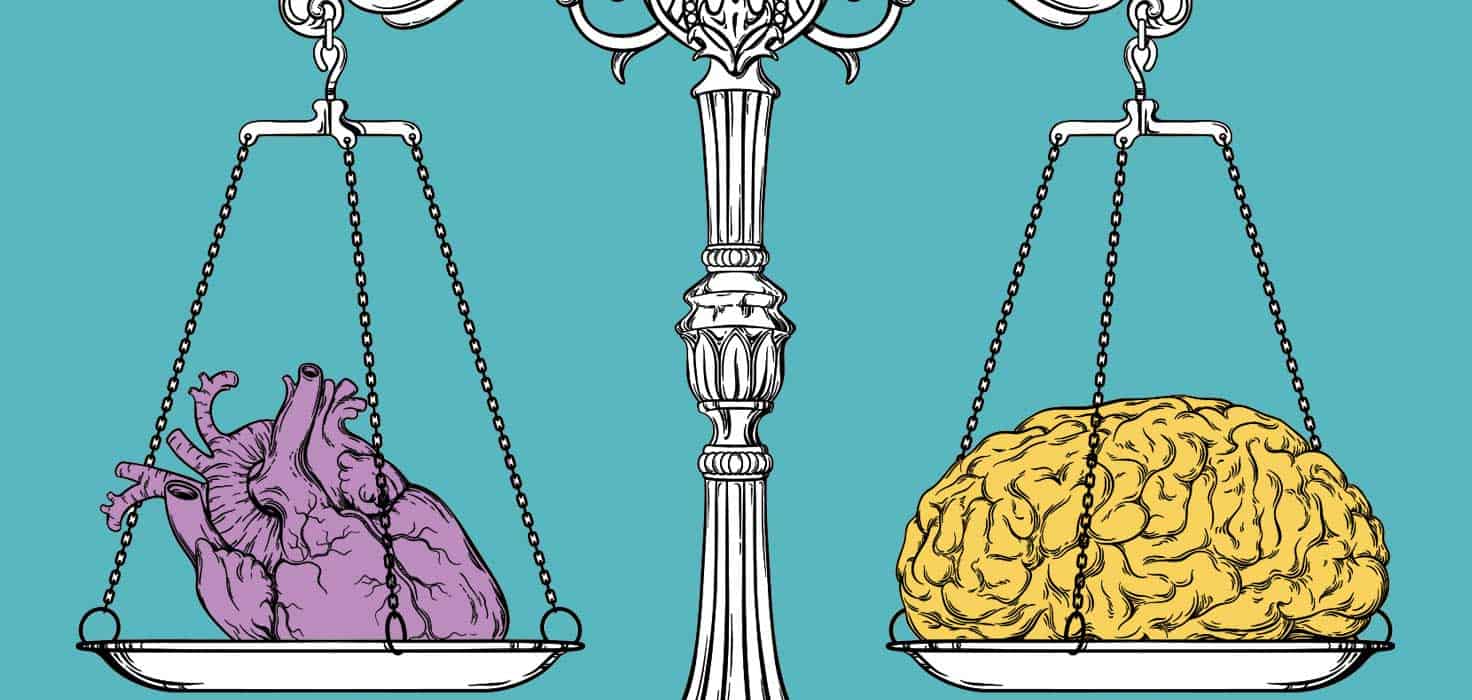IN A SOCIAL SCIENCE EXPERIMENT, when surgeons explained to patients that a needed operation had a 90% five-year survival rate, 82% of patients chose to have the operation. Conversely, when told there was a 10% likelihood of death within five years post-surgery, only 54% of patients opted for the operation.
The odds of survival never changed; it was always 90%. Yet, the percent of people who chose to go forward with surgery shifted dramatically depending on how risk was explained, interpreted, and processed. The way data was presented changed how people reacted.
While an interesting anecdote, you may wonder how it relates to product management and product marketing. The answer is, understanding how people process and react to information can make or break your product.
Our subconscious constantly filters all information we gather in some way, and it affects the conclusions we draw—this is true for everyone. Virtually every minute of our waking lives we receive information, process information, or give information, and it’s in each of these stages when cognitive biases arise.
Originally developed by social scientists Daniel Kahneman and Amos Tversky, cognitive bias is an umbrella term that refers to the systematic ways in which the context and framing of information influences individuals’ judgment and decision making. Simply put, cognitive biases—further articulated in Kahneman’s best-selling book, Thinking, Fast and Slow—are shortcuts to decision making that deviate from rational objectivity. They also have the potential to result in suboptimal decisions. And how people gather and use information in decision-making may be related to how they evaluate their options.
In product management, we constantly gather information from a variety of sources. And regardless of whether we like it, our perception is clouded by cognitive biases that act as filters through which we view and interpret the world. Yet, our job is to understand what current and future customers need, communicate those needs throughout the organization, and compellingly translate how our products address those needs to the marketing and sales teams. When we communicate, we must disseminate messages, value propositions, product strategy, roadmaps, and other concepts to internal and external audiences as effectively as possible—and we want our audiences to process this information in the way we intend.
For example, consider the term “power user.” When our minds conclude that someone is a power user, we’re likelier to give more credence to his or her comments. Or, if a user is viewed as “unsophisticated,” his or her feedback may be invalidated to some degree. Bias also manifests itself in unconscious ways, such as the proverbial “happy ears,” which leads to only hearing what we want to hear and disregarding the rest.
Wikipedia lists more than a hundred different types of cognitive biases, most of which affect our ability to make rational decisions. But let’s consider just three that certainly affect us as product managers.
Bias No. 1: We Hear What We Want to Hear
Known as confirmation bias, this has us believing and focusing on facts that support our beliefs while ignoring the facts that don’t. Perhaps you believe your product needs a new feature, so you visit with several customers. The customers talk and you listen, but your subconscious gives more weight to those customers who agree with you and dismisses those who don’t.
Additionally, because we frequently search for evidence to support our ideas, we may subconsciously fall into the trap of asking questions that support our theories. For example, you hear a customer say, “That’s interesting,” in response to a potential new feature. Because this is something you’d like to see implemented, you may only consider a positive interpretation of the word “interesting.”
Confirmation bias also causes us to think we know answers before we’ve even asked the questions—if we even ask them at all! Our subconscious is telling us, “That’s silly! Of course, our customer needs this.”
Tips for Dealing with Confirmation Bias
- Before talking with a prospect or customer, create a list of questions to guide the conversation. Don’t assume that you know the answers to any of these questions. The goal is to engage your prospect or customer in an intelligent conversation. Asking what seems to be an obvious question sometimes can reap big rewards.
- When possible, conduct these interviews with a partner or third party, and then review what you heard immediately after the interview. This allows you to review the conversation with someone else, helps identify any biases, and validates the information you gathered. It’s amazing how often people can be in the same conversation and hear radically different things.
- Get your notes on paper as soon as possible. Relying on your memory alone could lead to reintroducing biases into the mix. (The verbatim bias tells us that memories aren’t exact copies; rather, they are representations shaped by our emotions.)
- When collecting responses and drawing conclusions, ask yourself two questions: “Are the conclusions I’m drawing supported by what the interviewees actually said?” and “If I were an unbiased third party, would I draw these same conclusions?” You also may want to involve an unbiased third party in the data analysis.
Bias No. 2: Laziness Is Human Nature
Known as the law of least effort, this bias states that if there are multiple ways to accomplish a task, it’s human nature to choose the one that requires the least effort … even if it’s the least effective. The effort we seek to minimize can be mental or physical, and it’s true for us and for our consumers.
We spend our working days thinking about our company and our products. We know our company’s history, mission statement, and office locations. We know our products’ features inside and out. None of these details take a lot of mental energy for us; it’s all top of mind. Meanwhile, our customers probably don’t care about the company’s history or office locations—they want to know how our products will solve their problems. But, because we know our products so well, at times we can overlook or forget to convey these details. We force customers to do a lot of the mental heavy lifting to figure out our products’ features. Make it easy on your customers. Instead of using jargon, use simple language, storytelling, and examples to make your point.
Conversely, it’s hard work for us to understand our customers’ business issues and challenges. This requires a lot of intellectual horsepower and emotional energy, and yet these are relatively easy issues for our customers to express. Their challenges and needs are at the top of their minds, and it’s our responsibility to make it easy for our customers to understand how our products and services will help them solve their day-to-day issues, drive their business and achieve their goals.
Tips for Dealing with the Law of Least Effort
- Mental work is tough, but you can use it to your advantage. Incorporate common metaphors to describe your products and services. Use stories to get your point across. Minimize the technical jargon and be aware of the curse of knowledge: The more expert we are, the more difficult it is to communicate with nonexperts.
- Always come back to the business problem your product or products solve. Go beyond taking the easy path (discussing features only) and help customers see how our products will help them address their issues. Show the connection between the product and the problem it’s solving.
Bias No. 3: We Don’t Like Change
A preference for the current state is known as status quo bias, and it is tightly coupled with another major bias, loss aversion, in which we fear losses more than we value gains. The current state is the reference point, and any deviations from that point are perceived as a loss. Kahneman and Tversky have demonstrated in numerous experiments that fear of a loss is twice as powerful as the satisfaction of a gain.
Remember: A customer may be reluctant to change—even if your product can deliver significant advantages or is a big improvement over the customer’s current state. Even if the customer is unhappy with how the current product works, time and energy already have been invested into learning it, and your customer may not be open to learning something new. Your company has its sights set on product success, but customers’ status quo bias often explains why your product fails to meet those internal expectations.
Tips for Dealing with Status Quo Bias
- Clearly document the reasons why your customer may want to consider making a change. Are those reasons compelling? How do you know?
- Take time to truly understand why a customer may prefer the status quo, and then document the true costs of implementing your solution. These costs must include standard financial costs—training, implementation time, product costs, service fees, opportunity costs—as well as emotional costs, such as the risk of failure, looking foolish, decision regret, and implementation delays. For each of these reasons, develop strategies for mitigating the risk of making the change.
- Because people are willing to pay more to avoid a loss than they are to achieve a gain, it’s important to convey to the sales and marketing teams how your products will prevent a loss for your customers.
Clear Your Preconceptions
As much as we think we are rational human beings, we are in fact flawed and biased. Unless we are self-aware and careful, bias will creep into the way we receive, process, and give information. While there are hundreds of biases to which we may subconsciously fall victim, confirmation bias, the law of least effort, and status quo bias each change the way original communication is received or understood, and therefore, are particularly critical for product professionals. And remember, it’s not just our own biases that we need to heed, but the biases of those with whom we are communicating.
Authors
-

"Bob Hatcher, a professional with 40 years of experience, is a stalwart in sales training, consulting, coaching, and mentoring. His career spans prominent companies such as DEC, Lotus Development, Renaissance Solutions, and Miller Heiman, showcasing a wealth of expertise in elevating sales strategies. For questions or inquiries, please contact [email protected].
View all posts -

Neil Baron, a stalwart in product marketing and management, boasts 36 years of industry experience. Having contributed significantly at Sybase, Art Technology Group, Babson College, ATMI, and Baron Strategic Partners, he excels in innovation, value proposition, and technology commercialization. Neil is adept at solution selling, services marketing, and consultative selling. For questions or inquiries, please contact [email protected].
View all posts








